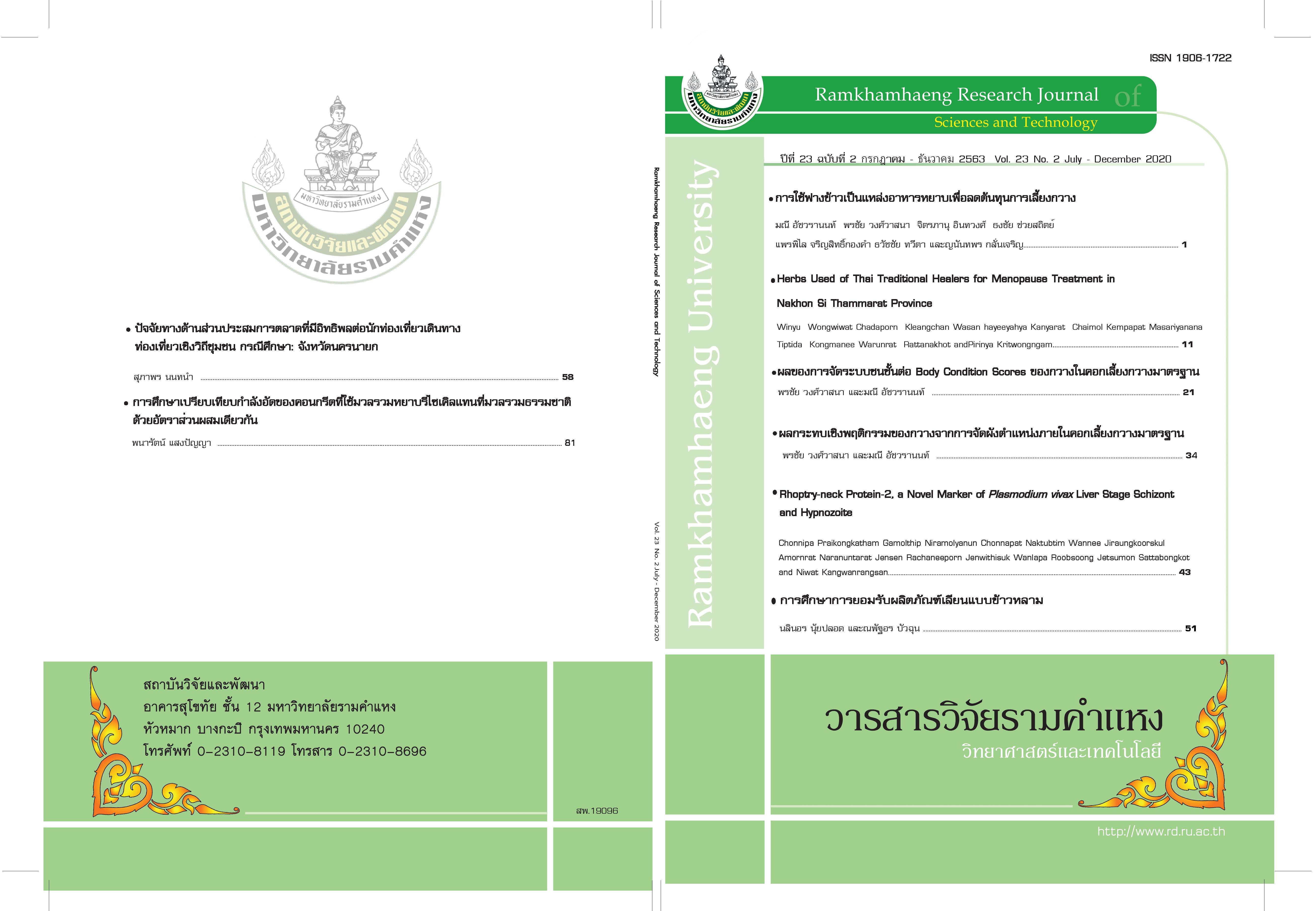Comparative Study on Compressive Strength of Concrete Using the Recycled Aggregates as Coarse Aggregate Replacement of Stone Aggregates with same
Main Article Content
Abstract
Aggregates have a volume of 70-80% of the total amount of concrete mixture. The aggregates are transported to the concrete plants which create costs of environmental and economic. Aggregates from the destruction of buildings to develop areas can be reused as concrete. The objective of this study is to compare the compressive strength of recycled aggregate concrete with natural aggregate by using recycled coarse aggregates Class M to substitute natural aggregate at the same mixing proportion. The mix proportions for this study are Mix Proportion A (1: 2: 4) and Mix Proportion B (1: 1.5: 3) by volume. The natural aggregates and recycle coarse aggregates were used in mix proportion. The concrete samples were prepared according to BS 1881-108: 1983 and curing in water for age of 3, 7, 14 and 28 days before testing the compressive strength. The results showed that the strength of concrete from the Class M recycled aggregates had the approximate strength of concrete from natural aggregate at the beginning of curing age. Its strength develops slowly after 7 days curing and has the strength lower than concrete from natural aggregates at the age of 28 days about 10 percent. From the results, we can conclude that recycled aggregate Class M can be used as coarse aggregate for concrete by provide its strength about 10 percent more expected as natural concrete.
Article Details
Ramkhamhaeng University
References
British Standard Institution, 1970. BS 1881: Part 5, Determination of changes in length on drying and wetting.
Japanese Industrial Standard, 2018. JIS A 5022:2018 Recycled aggregate concrete-Class M.
Kang, M. and Weibin, L., 2018. Effect of the Aggregate Size on Strength Properties of Recycled Aggregate Concrete, Advances in Materials Science and Engineering Journal, Volume 2018, Article ID 2428576, 8 pages.
Nixon, P.J., 1997. Recycled concrete as an aggregate for concrete—a review. First state-of-the-art report RILEM TC-37-DRC. Materials and Structures (RILEM), no. 65, pp. 371–378.
Olorunsogo, F.T. and Padayachee, N., 2002. Performance of recycled aggregate concrete monitoring by durability indexes, Cement and Concrete Research 32(2), 179-185.
https://th.wikipedia.org/wiki/เดอะมอลล์, 2562


